I’ve lately been riding the Washington Metro (the much resented, decidedly second-rate, but often adequate, rail transportation system) most days of the week at least once, sometimes twice.
It’s not as bad as it was a few years ago. Many of the old problems are still there and the system remains something of a disappointment, and at times an embarrassment. Certainly it is those things to those who have seen what other countries/places have done. I feel confident I’ve written on this topic before on these pages.
What I want to record here is on masks in the Metro, something unheard of before March/April 2020. I mean to try to coherently record some sociological observations here, so we’ll see if I can stay disciplined and do so.
_______________
First I should state my position clearly.
The “Covid Mask“:
- A dehumanizing symbol of submission…
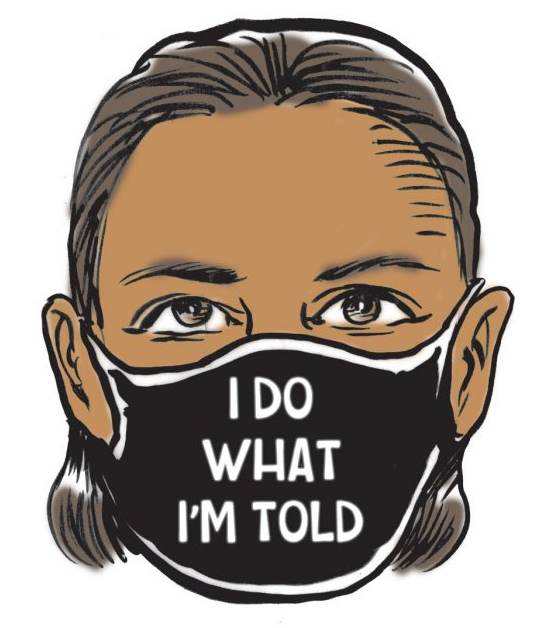
- A psychological (re-)enforcer of destructive Flu Panic and vector of the Panic Pandemic…
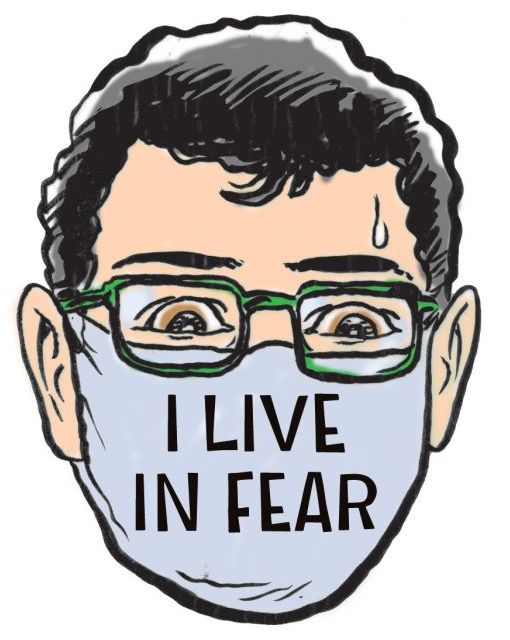
- A sign and symbol of social dis-cohesion, of atomization…
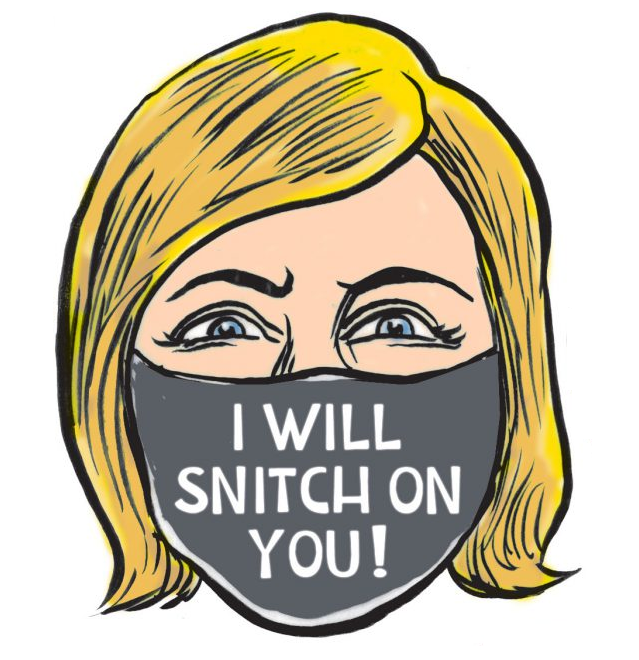
- Even a form of moral cowardice, absolutely not the stuff of which greatness is made…
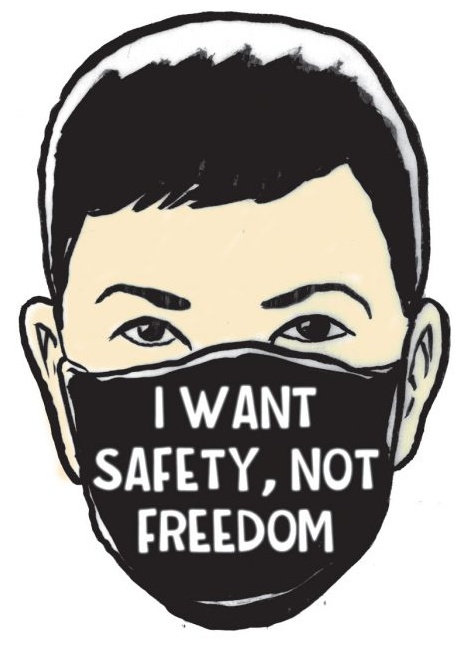
- A magic amulet-like item useful for social signaling and little else (studies show no evidence of any benefit; blocking normal access to oxygen, though, does happen)…
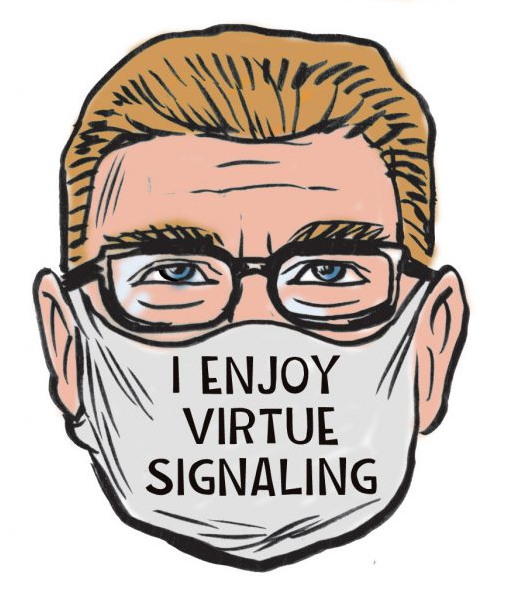
In case any of that was too ambiguous, count me as against masks.
I was against them from, approximately, the start.
But as I write these words (this post was written/revised between July 20-22, 2021), the nightmare of living in dystopian Covid Mask World feels nearly entirely gone, in even the most pro-mask parts of the USA. I see almost no one in masks in public places outdoors anymore.
When one does see a masked visage on the street, it most often seems to be an East Asian. Not exclusively, but on a per capita basis they’re way out in front. And they look highly isolated now, just as they did before the Panic really got into gear.
There was a kind of unstated consensus that the wearing of surgical masks for some general fear of flu or cold viruses in public was a sign of some kind of social pathology. This quickly disappeared, but seems to have somewhat recovered. I was in Japan for a time in 2015 and saw a few of the masked-in-public people. There might be one on a full subway car, or one or two visible as you look over a very busy street from above. It was not a general practice. And in my time there I got the feeling that those Japanese who worse surgical masks outside were: (1) usually women, (2) in many cases clearly trying to conceal themselves from others, to hide, to be anonymous—for the high-riding mask was usually paired with a low-riding cap.
Masks in the big blue urban centers in the USA are even largely gone even from indoor places, but still far above the former rate of ~0.00%.
The tide turned somewhere back there in April/May and the entire Flu Panic regime was rapidly rolled back.
I’m trying to think, but I don’t think any stores even maintain an illusion of a mask rule anymore. The last of the major disruptions in for-profit businesses were gone by May/June, with a few stragglers reentering the world in early July. A few McDonalds still don’t allow dine-in as of early July, one tangible example of lingering disruptions, but a big one I pass regularly that clung bitterly to the shutdown model finally reopened June 13; but rival Burger King had been basically fully open for dine-in since at least June 2020.
Businesses serving paying customers, those who have multiple options for rivals, exist under market pressures and must cater to customers. Non-business monopolies do not need to do any such thing. Non-market monopolies can impose whatever rules or ways of doing things, be they ridiculous or humiliating or capriciously arbitrary or even malicious, that they want. (Cf. any Department of Motor Vehicles).
The only places I think you still see these mask rules are in such monopolies. That generally includes anything to do with governments. The Metro is a monopoly player and is quasi-government run.
This whole thing–the social phenomenon of the Flu Virus Panic–is, of course, big, a big deal to our culture and politics, some say the biggest such thing since 1945. Simple narratives are crammed through the avenues of opinion-shaping one one side or other, but the whole thing is highly complex. They’ll be studying this thing for years across lots of disciplines, how it happened and how it got such staying power.
I underpredicted the strength, and staying power, of this thing in spring 2020. I overpredicted its staying power a year later in early 2021. I don’t want to believe the Flu Panic people who demand crude, no-exit-strategy sledgehammer options will be back on top, when flu season comes again in a few months. I see worrying signs that they will be back, but maybe not.
In any case, I’ve been interested in signposts for this, basically from the start, and that is where the Washington Metro comes in.
There is a posted rule in Metro (“federal law requires you to wear a mask while in the…”). And signs of the old Flu Panic regime still linger in the system. But lots of people are now ignoring the mask rule on the trains and stations with impunity.
My observation, from a large sample of observations by now, suggests that if you enter the Metro system, wherein it is still nominally mandatory to obediently don the “Covid Mask,” you will see something like the following mask rates at any given time:
- 10% to 30%: No mask at all. In some of these cases, the person probably does not have one on him/her; in others, the person is still “carrying” but did not want to wear it and did not take it out;
- 10% to 30%: Have a mask but it’s just for show. A mask is visibly attached to the person in some way, hanging somewhere on or near their face, but NOT actively worn at any given moment;
- 40% to 80%: Loyally wearing a mask. The ruler followers.
A common type of non-masker is a relatively young, professionally dressed male. That type of passenger is much more likely to be conspicuously non-masked in Category 1 than tourists (to the extent there are many of them). All else equal, males are more likely than females to be free of a mask. All else equal, Blacks are more likely to be without a mask than Whites. Come to think of it, this latter one I suspect may shield the non-masked whole from any attempt at crackdown (the concept “disparate impact” comes back to bite…?)
There is flexibility between these categories, which is where one particular interesting sociological observation comes in.
I notice that tipping-points occur locally with masks on the Metro, via the “demonstration effect,” and can tip the ratio at any given moment.
An illustrative example:
Seven passengers are in one end of a train-car within peripheral vision of each other, aware of each other. Two of the seven have no masks. Five have masks. The two with masks show no sign of being ashamed of not wearing masks and content about it, breathing free. Of the five masked people, some don’t want to wear the masks but feel they have to, or are frightened to break a rule, or think another person might yell at them, some set of fears. Observing the non-masked passengers are not being attacked, insulted, accosted, or arrested, soon one or two or three of the five originally masked passengers either take off their masks or transition to the “Mask just for show” category. The ratio of 5:2 Mask:NoMask soon flips to 2:5 Mask:NoMask. Then a few more people board the train-car, all loyally masked, and one or all of the “defectors” tip back into the Masked camp, perhaps afraid of being yelled at by a Volunteer Mask Enforcer, calculating that their chances of unwanted problems have just done up and it’s not worth it; they slink back into East Berlin, leaving their heartier fellows who breached the Wall to their own devices.
Decisions are socially influenced. Everyone knows it but sometimes we get these beautiful little natural experiments to show it and see it.
Metro which nominally mandates masks but never enforces the mandate, and by now the wider-social pressures are much relaxed and few wear them outside anymore, and in the right conditions the number of mask-wearers can plunge, even under a system of stated penalties for failure to comply.
We are seeing here a modified free market at work, one which could have kicked in from the start, if they’d dlet people making their own decisions and adapt, which eventually they did (had to do) anyway. A very large part of this whole debacle and International Flu Panic Response Quagmire an endless social and economic damage could have been averted.
I have seen no real effort in the DC Metro system to enforce masks at all, in June/July 2021. I myself have foregone some potential rides in the second-rate world of the DC-area subway, in the recent past, because I didn’t have a mask with me and felt annoyed or morally offended by the practice. I realize now that this one-man boycott was not necessary, for I have seen not a word spoken to any of the rule-breakers, and after I realized this I, too, have decide to stop wearing masks in the Metro system.
It’s not like Korea. A 1990s-era guidebook I once read described South Korea as “a democracy with authoritarian overtones.” In Seoul, teams of police (?) strut through train cars inspecting passengers confronting people who fail to wear their masks to some perfect standard, demanding these people adjust their masks. Basically that’s the kind of scene you’d get in an dystopian nightmare-world. And a lot of good it did: Their major social and economic disruptions continue without a clear exit-strategy, and no political courage to simply reject the Panic and apologize for the whole thing. They are totally quagmired in the system they created.
Lately I’ve heard Singapore has taken steps to reject the Panic model and treat “Covid” as any other flu, dismantle the entire Anti-Covid dystopia-lite apparatus.
Top-down edicts work better in Singapore, of course, than a place like Washington DC or any other of the USA’s “big blue cities.” It may be one reason why there is no enforcement of the ostensible mask mandate in the Metro is that they think they simply can’t do it. And this means the entire thing is something of a giant with feet of clay, and people’s individual decisions drive the whole thing more than government edicts.
These personal choices exist over a baseline in which the stale leftovers of the Flu Panic regime’s marketing campaign are still visible, like “Workers of the World, Unite!” signs in shop windows you pass as you creep up to the Wall to observe those who have breached it and are on the other side.
A picture I took a few days ago, a pretty good example of the kind of marketing campaign I mean:
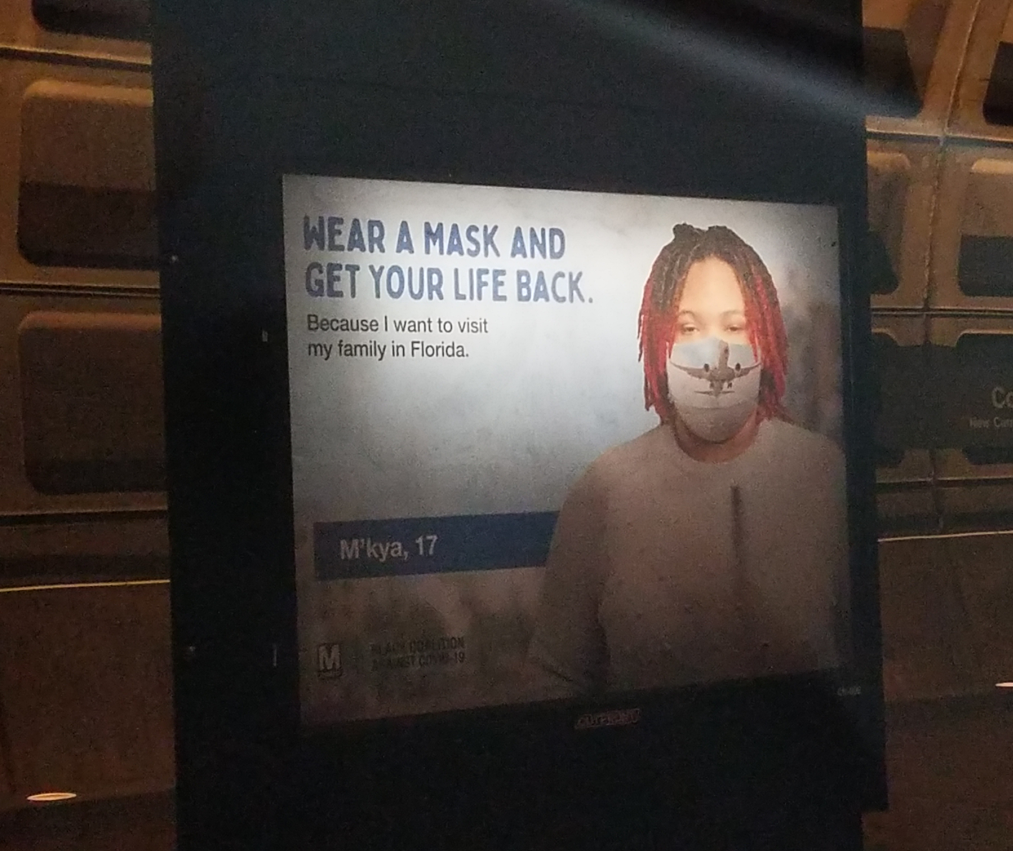
The forces of the Panic itself linger, but it was clear they were essentially out of power even in the USA’s “Big Blue” areas. The old slogans look weak now.
Here is another, taken on the same day:

The most ridiculous-seeming of all were the leftover posters warning passersby at the MLB stadium that “Covid-19 is a VERY DANGEROUS disease!” etc., as dozens of maskless people walk almost every minute, at close quarters to each other, for hours. (The Washington Nationals organization lifted its attendance-limit on June 9, and signaled it would be doing so weeks earlier.)
All this makes me wonder where things stand. In 2020 we saw the rise of a hardcore and ultra-committed Flu Panic coalition. You still hear from them but their influence, their hold on power which was once so impressive/terrifying, is shown now to be now pretty weak, even in monopoly-controlled spots that still cling to the old slogans, such as the Washington DC Metro system. Are they waiting for the next flu season to strike back in force?
There are signs that some in the old coalition want it to be over. As for Metro, they are running commercials on TV boasting about how they are doing super-special cleaning measures, i.e., public-health theater.
But those sticking to the Flu Panic coalition are still too numerous, agitated, and influential to just roll it all back by a one-time decree (hence the Flu Virus Panic “Quagmire”). This is all the more so when flu season comes again. Even now, a lot the news-commentary squawkers are spending much time on flu, even in mid-summer when there is seldom much flu at all in the climates typical of the USA.
___________________
Some may not remember that masks were not particularly a feature of the early stages of the Panic Pandemic in the West, but only gradually rolled in. The mask mandates were surprisingly late on the Panic’s timeline.
I think masks survived specifically because they were such a clear way to overtly signal obedience to the Virus Consensus (which was, roughly: “Panic now, ask questions later or never; dissent is unpatriotic; and to hell with the consequences of the lockdowns”).
The phenomenon I’ve observed on Metro, of some people consciously choosing to ignore the rule and of social tipping-points being observable within the dynamic environment of a train-car, I think fits with that.
.
